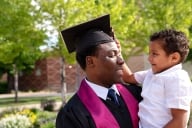You have /5 articles left.
Sign up for a free account or log in.
One of the most commendable initiatives of the Brazilian government, with respect to higher education, was the launching of the Science without Borders Program— “a program that seeks to promote the consolidation, expansion, internationalization of science, technology, innovation and improve the Brazilian competitiveness through the exchange and international mobility". It is an important step taken by the Federal Government in the direction of an intense process of internationalization that deserves bows, but also calls for some reflection.
Brazil, emerged as a strong economy and needs more than ever to invest in the education of its citizens, developing the skills to meet the requirements of global markets. Launched in 2010, the Science Without Borders program envisages the allocation of up to 101,000 scholarships, a commitment to last until 2018, to promote knowledge exchange. With these scholarships, undergraduate and graduate students may undertake studies abroad focusing on the development of innovation and technology. SwB is also a two-way program intending also to attract researchers from abroad who are motivated to develop cooperative partnerships with Brazilian researchers in specific development priority areas.
Gains achieved so far
The merits of the program are undeniable. By 2014, the federal government had invested R$ 3.16 billion (equivalent to US$ 1.05 billion) and provided a total of 78,173 scholarships in the following categories: funding for undergraduates to spend six to ten months abroad (61,542 awards); similar “sandwich” doctorate scholarships (8,064); postdoctoral studies (4,332); full doctorate fellowships (2,687); masters degree study (557); visiting senior researchers (628) and “young talented researchers” to develop a research project in Brazil (363).
However, the gains go much beyond the numbers and improved qualifications of young students and researchers. The greatest achievement has perhaps been the opening of dialogue between Brazilian higher education Institutions and peer institutions in many different parts of the world. The academic mobility has opened channels of communication for ongoing future partnerships with institutions that were perhaps not within the reach of many Brazilian universities previously. The result has been the design of joint programs, the promotion of courses with double degrees, joint diploma programs, student and staff mobility as well as increased opportunities for collaborative research and international publications—key factors for advancing in international university rankings.
The SwB Program has also highlighted some deep problems, particularly the language barrier. In general the Brazilian population has limited ability to communicate in other languages and foreign language proficiency is a basic requirement for a SwB scholarship. Brazil has started to offer the academic community free opportunities to learn foreign languages, with an emphasis a priori on English, through the Science without Borders Program. At the same time, the program offers individuals the opportunity to assess their linguistic level by making internationally accepted language proficiency exams (such as TOEFL) available without charge.
Challenges of the Program
Four years after the SwB Program launch, additional actions must be made a priority in order to achieve expected objectives, especially the establishment of outcome measures. The role of higher education institutions—especially managers of international cooperation and course coordinators— is essential. These administrators are the most qualified to coordinate and monitor the process. It is vital to implement strategies that encourage and enable a greater engagement of these actors in the SwB Program. Administrators and faculty must collaborate to insure appropriate orientation before, during and after the international experience, especially for undergraduate students.
There is a need for attention to more thoughtful criteria in the selection of students, better definition of the activities to be undertaken at the host institution, and monitoring of what is actually being done during the stay abroad. But above all, there needs to be strategies to multiply the impact of the exchanges once grantees return. There should be opportunities for the academic community and the broader Brazilian society to learn about the experiences of students and scientists while abroad in order to appreciate the results of such a big public investment. Knowing what was learned and what contributions will be brought to the country, how these experiences will be socialized and applied is key factor to ensuring the program’s quality, maintenance and sustainability.
A government initiative of this magnitude, with such a robust financial investment, requires substantial attention to the evaluation of the results and whether the program goals are being achieved. Every participant taking part in this crucial moment in Brazil— the federal government, higher education institutions, researchers and students—must be aware of the possibility for change as a result of this important initiative to advance Brazil in international and intercultural education.
What’s Next?
The establishment of national policies for the internationalization of higher education definitely must be among the priorities of the government. The government might offer guidelines to help each institution to develop internationalization strategies that align with national objectives and increase the opportunities for Brazil with regards to innovation and technology aimed at this moment and into the future. It must be an expansive and collaborative effort that will build a different country in a near future that will be more academically capable and more scientifically qualified, but above all, recognized for its highly qualified professional and research expertise.
________________
Luciane Stallivieri is a professor and researcher at the Universidade Federal de Santa Catarina in Brazil.





